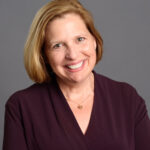Adult & Pediatric Clinicians & Mitigation Strategies

Dr. Jonas
Beth Jonas, MD, FACR, chief of the Division of Rheumatology, Allergy and Immunology and the Reeves Foundation Distinguished Professor of Medicine at the University of North Carolina, Chapel Hill, specifically addressed the workforce shortage in adult rheumatology. Colleen Cornell, MD, MPH, a pediatric rheumatologist at the University of Minnesota, Minneapolis, addressed the pediatric rheumatology workforce shortage. And Daniel Albert, MD, a rheumatologist at Dartmouth Hitchcock Medical Center, Etna, N.H., discussed strategies to mitigate burnout.
“Rheumatology is really, really popular, but every year, we leave 80 to 100 residents [seeking fellowships] on the field,” said Dr. Jonas. “We need more training programs.”
But training more rheumatologists won’t be enough to close the gap. “We aren’t going to train our way out of this problem,” said Dr. Jonas. We need resources to support the rheumatology career cycle, more advanced practice providers, more best practices to navigate the payer landscape and more innovative programs to help train primary care and other providers in rheumatology. A new ACR resource, Rheumatology for Primary Care, is a step in the right direction.
“We really need to address the factors that lead to burnout and possible early attrition from the workforce,” said Dr. Jonas.
We also need to address the factors that affect the financial health of rheumatology practices, she said.
She mentioned Workforce Expansion Grants being made available by the Rheumatology Research Foundation.
“I encourage you to think broadly with us, think creatively with us,” concluded Dr. Jonas, inviting members of the audience to help solve the rheumatology workforce crisis.
The provider gap is even worse in pediatrics. “Our target is one provider for every 100,000 children,” said Dr. Correll, but there are wide swaths of the country that don’t have pediatric rheumatology clinicians.
“Why would you want to train for three more years to make $100,000 less per year than an adult rheumatologist?” Dr. Correll asked. The key driver of lower pediatric rheumatology salaries is the patient population. Adult rheumatologists treat a significant number of Medicare patients, while pediatric rheumatologists treat a significant number of Medicaid patients. Medicaid reimbursement is about 30% lower than Medicare reimbursement for the same codes.
“I enjoy what I’m doing, and I look forward to going to clinic every day,” said Dr. Albert diving into a discussion of strategies to mitigate burnout.



